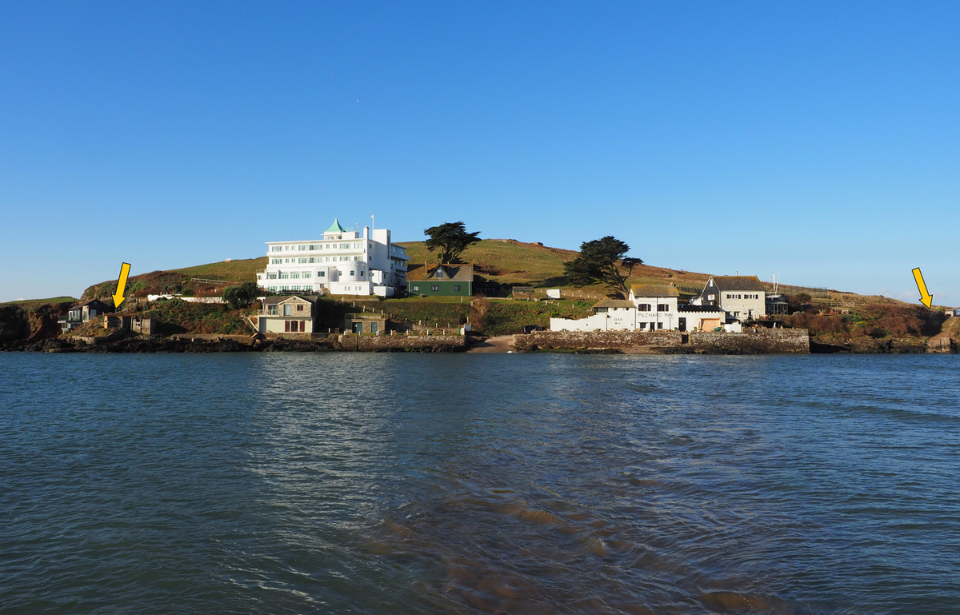One of the United Kingdom’s most iconic hotels was also very much on the frontline of defensive duties during the Second World War. Its island location, just off the South Devon coast, meant its beach would have been ideal for a potential invasion point, and the Art Deco hotel of Burgh Island still has the remains of two pillboxes on its extensive island grounds.

It was a party-type resort island even before the war, and over time has attracted a myriad of guests, including pop stars, film stars and writers.
This was the island where crime author Agatha Christie wrote Evil Under the Sun, and guests have included the Beatles, Noël Coward, aviator Amy Johnson, Lord Mountbatten of Burma and R.J. Mitchell, the designer of the Supermarine Spitfire.
The island was sold in 1927 to filmmaker Archibald Nettlefold, who built a more substantial hotel in the Art Deco style, which was in vogue at the time. By the 1930s, Burgh Island had become one of the most popular hotels of its time.
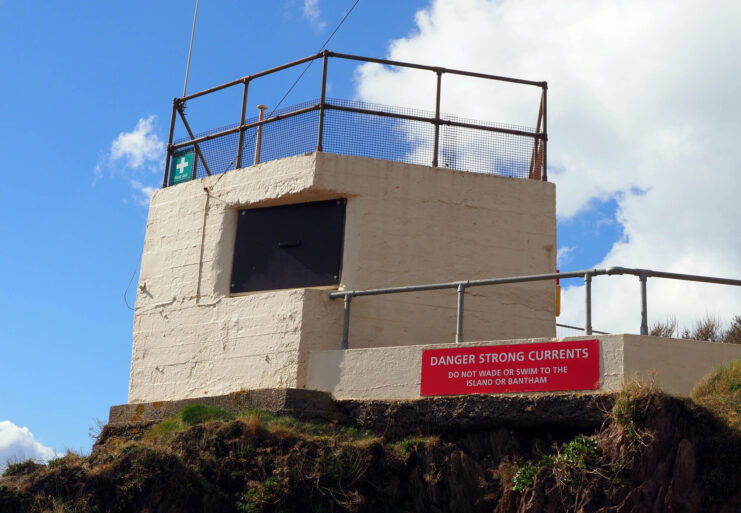
Today, the site is still a magical place to stay, with a great ambience and style of that 1930s period, and the Fred Astaire vibe is retained around the whole building. Dressing for dinner in black tie is typical, and cocktail hour before that. You’ll experience it while accompanied by melodies of the ’30s and ’40s as you dine, with a live band on special nights, too.
What certainly makes the hotel so unique, as well, is that, during periods of high tide, instead of a ferry boat to take guests to and from, they use a “sea tractor.” The 15-foot-high Burgh Island sea tractor, called the “Trundle,” is in its third generation, and it was originally built as a pioneering and safe way to get guests to and from the island.
Driving over the half mile of sea-covered sandy beach, they use a four-wheeled beast with massive tractor-type tires that takes passengers along with their cases, not only through the waves, but riding high above the surf, too.
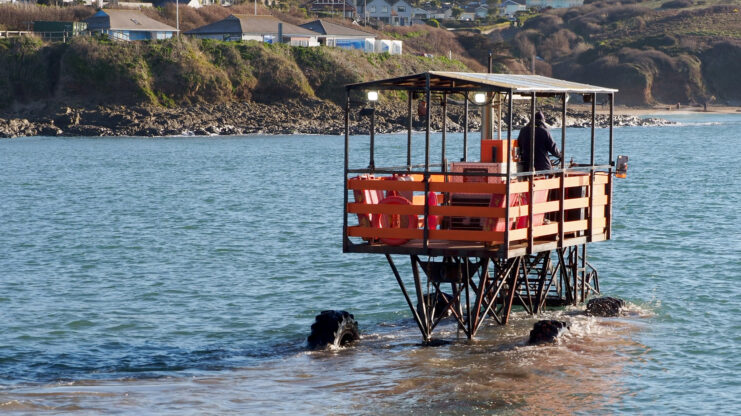
During World War II, Burgh Island’s convenient seaside location meant the hotel was used as a recovery center for injured Royal Air Force (RAF) personnel. However, during the conflict, the top two floors were damaged by a bomb, and in the build-up to D-Day in June 1944, there was a large practice beach assault at nearby Slapton Sands, called Exercise Tiger. A flotilla of LTCs were caught off guard and attacked by nine German torpedo boats. Over 700 troops were killed in the live fire exercise.
After this, it became crystal clear to the planners that E-Boats were, indeed, a great risk to D-Day, and it was vital that they were aware of their potential to create havoc to the Normandy assault units. There appears to be thoughts that Sir Winston Churchill and Dwight D. Eisenhower were staying nearby to perhaps witness what was a crucial part of the D-Day build-up exercise events, but this has never been confirmed.
This military hospital may have provided an ideal to place for the pair to stay or, indeed, treat the wounded from it, too. Certainly, there was a massive cover up surrounding Exercise Tiger, and maybe the knowledge of Eisenhower and Churchill staying in the area was part of that cover up, as well?
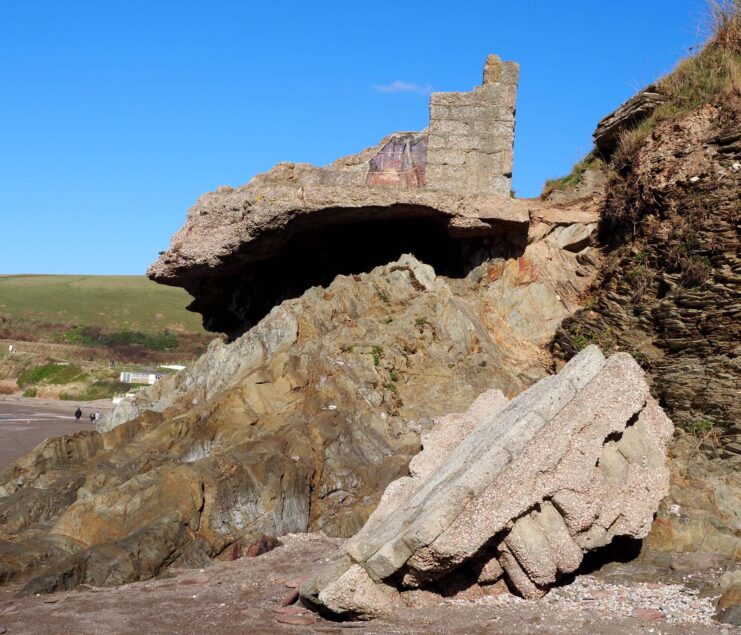
Although the white painted glamorous hotel “sticks out a mile,” the various wartime defensive structures found around the island are often missed by the hotel visitors themselves. They were installed to provide an arch of fire over the beach area, between the hotel and the main Devon coast less than a mile away.
The extensive sandy beach, which is uncovered by the sea twice a day, would have required multiple-machine gun coverage of the beach areas as and when the sea receded.
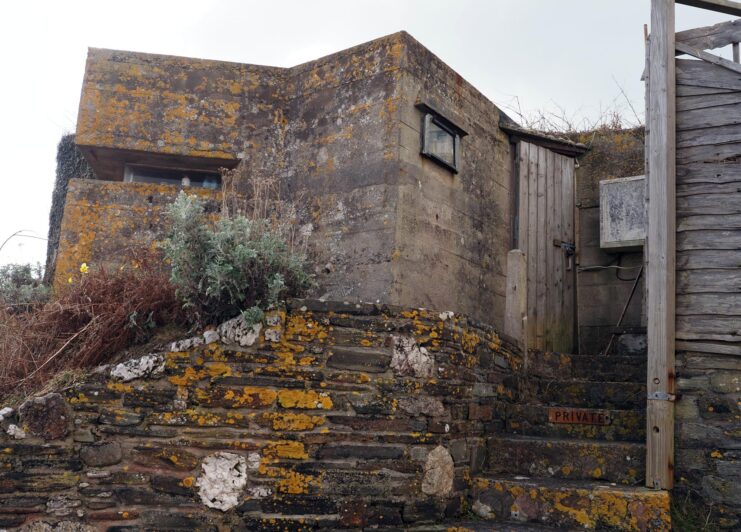
Today, the two remaining on the island are showing their age. However, they probably blend in better than when they were first installed at the start of the war. The weathered and worn the concrete structures are covered in places by sandy earth, plants and the odd flower or two.
One of the pill boxes on the east side of the island was sold privately for around £80,000. However, due to planning restrictions, the owner hasn’t been able to use it in the way that they’d hoped. Although the gun slits are now glazed, library pictures show the interior as having a small kitchen and, perhaps, a tiny sleeping area, too.
The pillbox on the west side is no longer accessible and is used for storage by the hotel. Both can be approached from the beach, but over slippery rocks at low tide for that closer look.
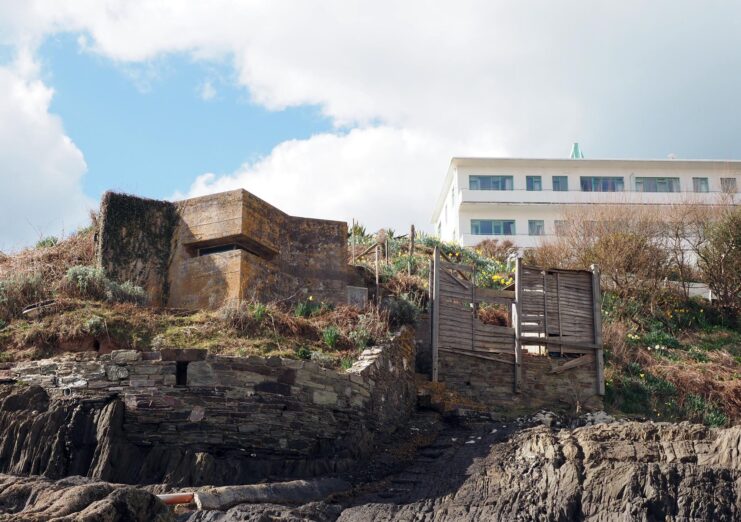
On the east side, but on the mainland, there is another former pillbox. This has been taken over by the local beach rescue team, run by the Royal National Lifeboat Institute (RNLI). They patrol at the height of the busy summer holiday season from there.
Half a mile on the west, at Challaborough Bay, on the mainland, there is another pill box location, but very much now wrecked. That, again, would have provided cross-firing cover over the beach at Burgh Island from its landward position. The crumbling remains have suffered from many storms since the end of the war and the remains are now hardly recognizable.
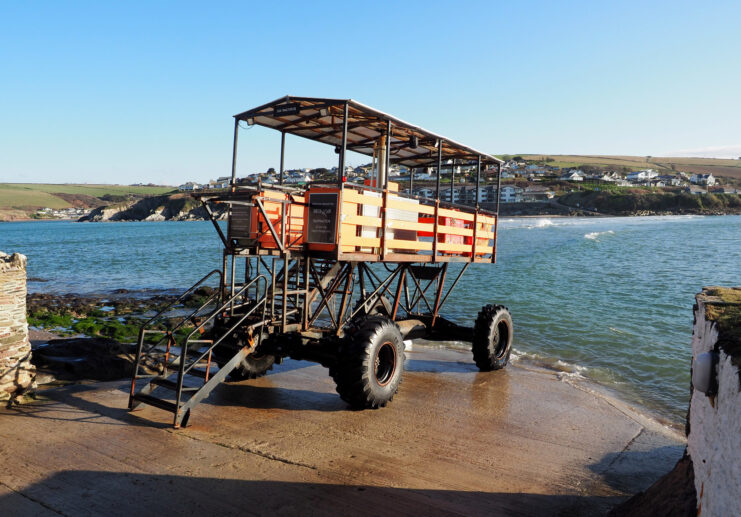
More from us: Have You Ever Wanted to Take a Ride in a German Tiger Tank? Now May Be Your Chance!
The hotel was restored to its former glory in the first decade of this century, and it continues to thrive today.
